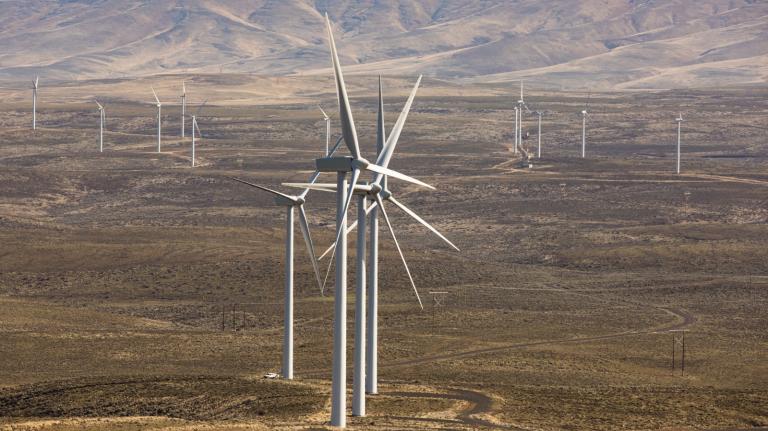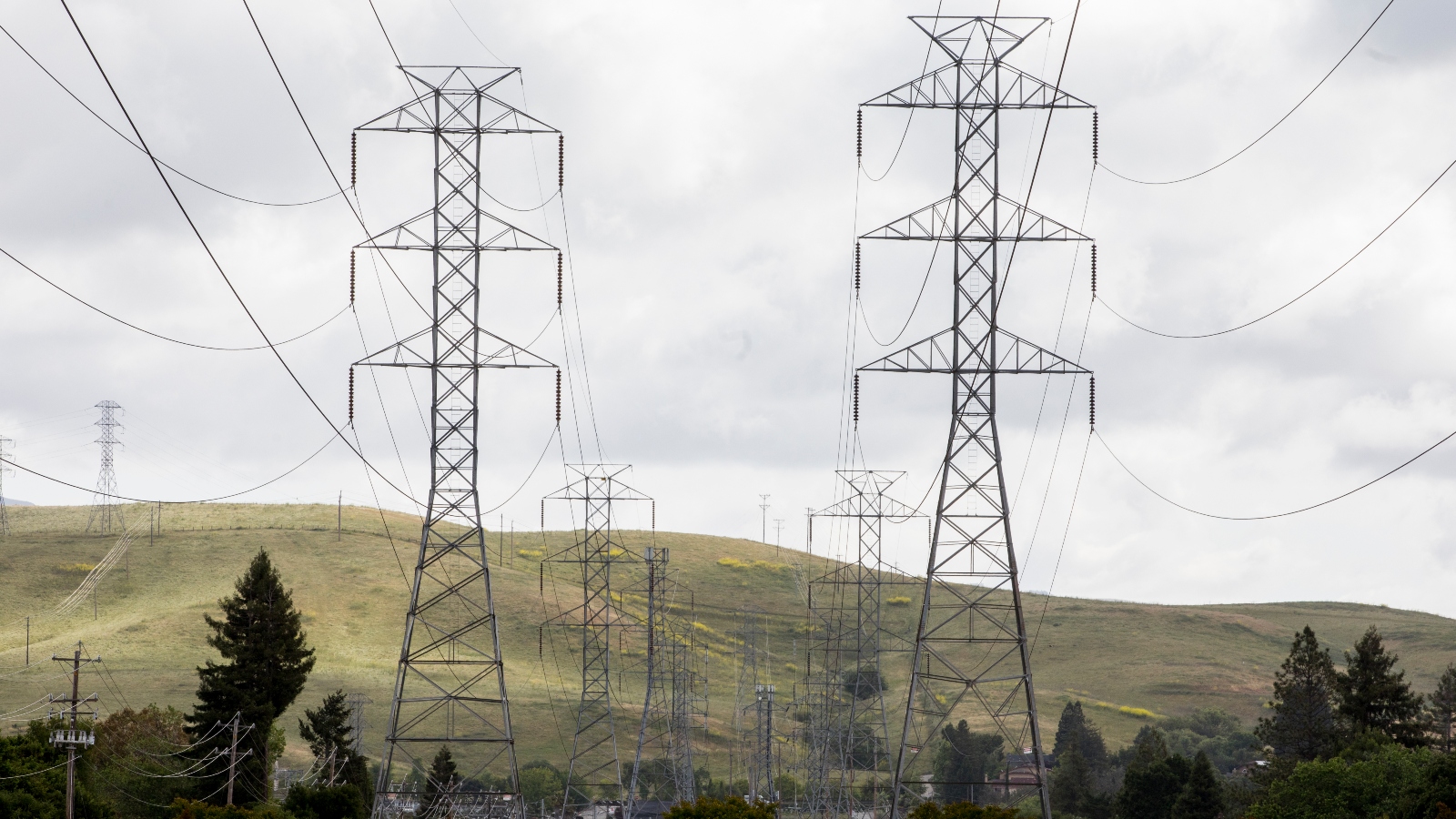For renewable energy to power the United States, the country will need ambitious politicians, public buy-in, and billions of dollars in investment. But there’s a slightly less flashy tool that will also play a key role in the renewable energy transition: eminent domain law.
Eminent domain is the government’s power to seize private property for public use (with fair payment). It’s controversial — many Americans staunchly defend their private property rights — but the truth is that eminent domain has shaped the U.S. into the country we know today. From highways to national parks to public buildings such as courthouses, there is infrastructure in every corner of the country that would not have been built without the use of this legal power.
Eminent domain has long been a critical tool for the fossil fuel industry, most recently for natural gas because it allows companies to obtain the many parcels of property needed to build vast networks of pipelines. As a result, over the past decade the legal practice has become a popular target for environmentalists, who have teamed up with landowners to oppose its use for projects including the Dakota Access Pipeline, the recently canceled Atlantic Coast Pipeline stretching from West Virginia to North Carolina, and the controversial PennEast Pipeline, which would transport natural gas from Pennsylvania to New Jersey.
But legal experts say eminent domain could soon shift from being one of climate activists’ biggest foes to a vital ally. President Biden announced plans last week to cut U.S. emissions 50 to 52 percent below 2005 levels by 2030. For the country to realize its clean energy goals, it will need a massive overhaul of its infrastructure, including finding a way to transport electricity from wind and solar farms in rural areas to population centers where energy is in demand.
“Eminent domain is critical to building a green sustainable grid,” said John Echeverria, a professor at the Vermont Law School who specializes in environmental and property law. “Whenever you’re dealing with linear infrastructure, whether it’s a road or a pipeline or an electric transmission line, eminent domain is essential in order to construct the project.”
However, some legal experts see flaws in current eminent domain law that they say need to be rectified for it to be as effective as possible in the clean energy transition. That’s because federal eminent domain policy currently favors natural gas transportation projects over renewable energy ones. As the country’s priorities and energy goals evolve — and climate change’s impacts become increasingly tangible and devastating — some experts argue that the government needs to reconsider its definition of which projects serve a public purpose.
“We should limit the use of eminent domain authority for fossil fuel projects because it’s no longer in the public interest,” said Alexandra Klass, a professor at the University of Minnesota Law School who specializes in energy, environmental, and property law. At the same time, she explained, the country needs to incentivize the development of electric transmission lines for renewable energy by enhancing these projects’ eminent domain authority.
Electric transmission lines are the wires you see swooping overhead along streets, roads, and open spaces. They carry electricity to homes and businesses across the country. But there’s an obstacle for developers of interstate electric transmission projects: They have to obtain distinct eminent domain privileges in each state they want to build in, making construction of interstate power lines an arduous process.
Obtaining eminent domain authority on a state-by-state basis not only saddles electric transmission developers with separate batches of paperwork, but it also pits them against legal opposition in some of the states they need to build in. Initial plans for a transmission project to carry hydropower from Quebec to Massachusetts, for example, were kneecapped by the New Hampshire legislature in 2012, when decision makers blocked the developers’ authority to seize land using eminent domain.
For a project to obtain eminent domain authority, it must serve a public purpose. But what if the electric transmission lines in question are simply carrying energy through the state to power another destination? It could be argued that although the project serves a national public purpose, it doesn’t serve the public interest of residents in the state it will cut through.
“The rhetoric is often, like in Arizona, ‘We don’t want to be an extension cord for California,’” said James Coleman, a Southern Methodist University energy law professor who has written about energy and eminent domain. Such sentiments have fueled opposition in Missouri to the Grain Belt Express, an 800-mile high-voltage electric transmission line that would transport wind energy from western Kansas to parts of the Midwest and the eastern United States.
“It’s very difficult to build long-distance, interstate transmission lines,” said Klass. “That’s why we haven’t been as successful as we could be in integrating all the wind energy that’s in the Midwest.”
In comparison, companies building natural gas pipelines obtain their eminent domain authority at the federal level, through the Federal Energy Regulatory Commission, or FERC. Once approved, they are granted eminent domain authority in any state they need to build through. This process is fairly straightforward for gas companies: If they have contracts to transport gas, eminent domain authority is almost always granted. FERC has only denied eminent domain power to two pipelines in the last three decades, according to a 2019 Minnesota Law Review article written by Coleman and Klass. (Oil pipelines don’t have federal eminent domain powers, but this is less problematic for companies since oil is more easily transportable by train, truck, or ship than natural gas.)
This baked-in advantage for natural gas infrastructure can be traced back to the first half of the 1900s, when the fuel was just emerging as one of the nation’s primary energy sources. Amidst concern that the natural gas industry was becoming monopolistic, the federal government enacted the Natural Gas Act of 1938, giving itself more control over interstate pipelines. In 1947, Congress amended the legislation to give natural gas companies federal eminent domain authority.
Governments around the world have mobilized to transition toward renewable energy in the coming decades, and Klass argues that means our eminent domain policy should evolve, too. “If we take the energy transition seriously, I think there’s a role for greater eminent domain authority, at least for electric transmission lines,” Klass said. “That would be a good thing.”
A simple version of eminent domain reform would be for Congress to give electric transmission lines the same federal eminent domain authority as natural gas, legal experts argue. If they wanted to go one step further, lawmakers could even revoke federal eminent domain powers for natural gas pipelines, disincentivizing continued development of the fossil fuel. Although Klass supports that type of action, she said that expanding eminent domain authority in any way is a touchy subject for most Americans. “Even if there was a House and a Senate with Democratic majorities, granting more eminent domain authority would probably not be first on their list of things to do,” she said.
There was some movement on this front 16 years ago, when the Energy Policy Act of 2005 was passed. This legislation granted FERC the ability to approve federal eminent domain authority for electric transmission lines designated as “congested” by the Secretary of Energy, meaning those lines not able to handle all current requests for service. However, FERC faced political and legal setbacks in its first attempts to use this authority. Since then, the authority to grant federal eminent domain to electric transmission projects has gathered dust and “not been used that often, or really at all,” Klass said. She points to a report by legal scholars at Columbia University and New York University that suggests the country may need new legislation altogether to empower the federal government to site electric transmission lines.
Eminent domain reform could also happen in state legislatures, which Klass advocates for in a 2019 Wisconsin Law Review paper titled “Eminent Domain Law as Climate Policy.” She recommends actions such as revising the definition of “public use” to eliminate fossil fuel projects and instead applying the term to transmission lines transporting electricity from renewables to, from, or through a given state. States can pledge emissions reductions all they want, she said, but as the country’s oil and natural gas industry expands, eminent domain reform is a way for states to demonstrate that they are actually committed to the renewable energy transition.
“That’s great to have those mandates,” Klass said. “But why are you still giving eminent domain authority for fossil fuel projects? Why don’t you take that away? And why don’t you give some more eminent domain authority for clean energy projects?”




